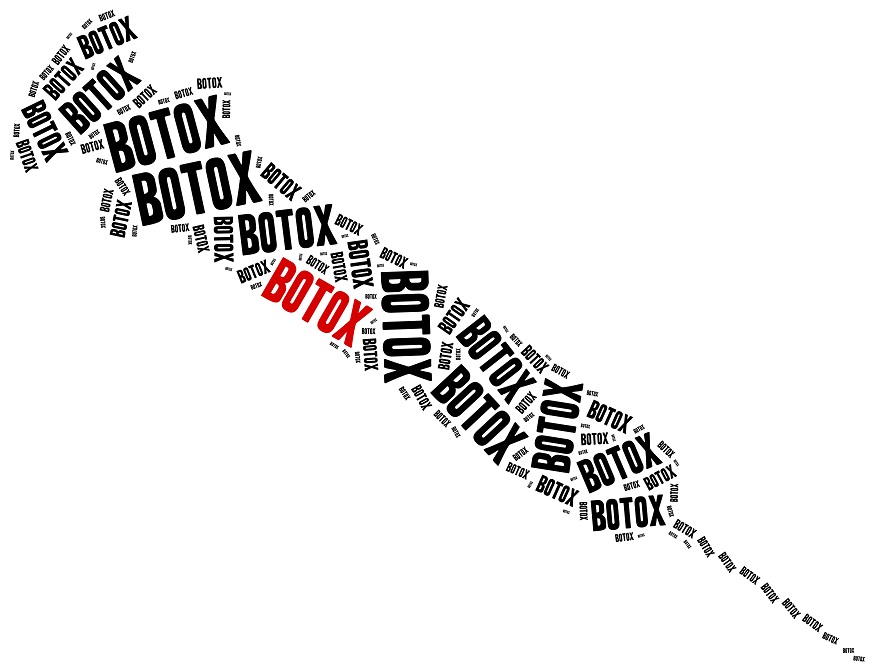Can Botox Help Treat Light Sensitivity?
Written by Dr. David Evans Last modified on August 6, 2018
Last month I wrote about an interesting new potential application for Botox as a treatment for light sensitivity (photophobia). At that time, we didn’t have any information on Better Vision Guide about photophobia, so I made the decision to first describe light sensitivity in general. With that background now in place, let’s talk about the application of Botox as a potential treatment for light sensitivity.

Botox (botulinum toxin type A) is an injectable neurotoxin most commonly associated with cosmetic treatment. For cosmetic purposes, injections of Botox paralyze the muscles that cause wrinkles, making it a great counter to those nagging age-related issues like crow’s feet, and frown and forehead lines.
Although Botox is most well-known for cosmetic treatment, it is also approved to treat a number of other issues, including eye muscle spasms, overactive bladders, severe armpit sweating and migraine headaches. Prescribing Botox to relieve symptoms of light sensitivity is not currently on this list, but based on the findings from a recent survey, it soon could be.
Published in Ophthalmology, the study focused on 91 patients receiving Botox injections to treat chronic migraines (15 or more per month). Researchers asked patients about light sensitivity experienced during and between migraines (Botox injections were administered during migraines). The questions focused on the severity of three specific things: migraines, photophobia and dry eye. Patients were asked to assign a numeric value to this severity (The higher the value, the more severe). Approximately 80 percent of those questioned rated their photophobia as severe prior to the onset of a migraine headache. After treatment with Botox, more than 70 percent of these people reported an improvement in photophobia. Patients also reported an improvement with dry eye after Botox treatment. Approximately 45 percent of patients reported severe dry eye symptoms during migraines, while nearly 30 percent noted some improvement after Botox treatment. According to the research, the majority of patients that experienced these Botox-related improvements were on the older end of the study’s age demographic.
Although this study focused on patients using Botox to treat migraines, the unexpected benefits of improved photophobia and dry eye syndrome could suggest that the injectable could benefit non-migraine sufferers dealing with light sensitivity and/or dry eye.
How Does Botox Help?
Essentially, researchers speculate that migraines, photophobia and dry eye syndrome share “neural pathways” which links their response to certain neural triggers. By decreasing the amount of migraine inflammation through Botox treatments, it’s therefore reasonable to assume that it can have an effect on decreasing the severity of the inflammatory pathways associated with light sensitivity and dry eye.
Sounds Great, But…
Although researchers are excited about the unexpected results and potential expanded applications for Botox in ophthalmology, they are quick to note that these results are preliminary and require further validation. One issue with the results is that patients were asked to recall their experiences during the migraine and Botox treatment; the levels of dry eye and light sensitivity were not directly tested.
Researchers were also quick to note that there may not be an application for Botox as a treatment for photophobia and/or dry eye outside of patients suffering with chronic migraines. The overwhelming consensus is that more study is needed to more completely understand the connection between migraines, photophobia and dry eye, and whether Botox may be a viable treatment option for all three.
If you suffer from chronic migraines and have not yet discussed Botox as a potential treatment, speak with your ophthalmologist to get more information about whether it might be an option for you; especially if you experience severe light sensitivity and/or dry eye during your migraines.
As always, I will continue to follow the research and update as more information emerges.
If you’re interested in learning more about the technical aspects of this study, you can read more here.
